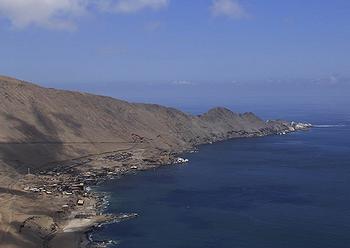
SANTIAGO, Chile, April 2, 2014 (ENS) – The Chilean authorities Tuesday ordered the evacuation of coastal areas after an earthquake of 8.3 magnitude struck off the coast of northern Chile at 20:46 hours local time.
Twelve hours later authorities canceled all tsunami warnings and watches for countries along the Pacific coast, including: Chile, Peru, Ecuador, Colombia, Panama, Costa Rica, Nicaragua, El Salvador, Guatemala, Mexico, Honduras, Antarctica, Pitcairn and French Polynesia.
Tuesday night a bulletin from the Pacific Tsunami Warning Center said the coasts of Peru, Ecuador, Colombia, Panama, Costa Rica and Nicaragua were all at risk of a tsunami.
The Center, which is based near Honolulu, warned that the tsunami might reach the Hawaiian Islands 6,574 miles to the northwest.
The National Tsunami Warning Center said a quake of this magnitude could generate a “destructive tsunami” for coastlines, and it generated a “large” tsunami along the Chilean coast and north to Peru.
Its epicenter was 56 miles (86 km) northwest of the copper mining port of Iquique. This city of 180,000 is renowned for its white sand beaches and known as one of the largest duty-free commercial port centers of South America.
The tsunami wave was highest at the small town of Pisagua, Chile, where it reached a height of 6.5 feet (two meters).
At Iquique it was measured at 5.8 feet (1.7 meters), diminishing in size to just 1.8 feet (half a meter) at Matarani in southern Peru.
Reports of the earthquake’s strength vary from magnitude 8.2 from the U.S. National Weather Service’s National Tsunami Warning Center to magnitude 7.9 according to the first reports from Chile’s National Seismological Center. Now the Chilean agency has changed its earthquake measurement to a magnitude of 8.3.
The quake is considered shallow at a depth of 6.2 miles (10 km) below the ocean floor.

A National Committee for Emergency Operations has been formed to handle this event. It is headed by the Minister of the Interior and Public Security and includes the National Director of ONEMI Office of Emergency Management, who will monitor the status of this emergency, in coordination with the regional committees for emergency operations in the most affected areas.
The ONEMI Emergency Office says landslides have partially covered some coastal roadways.
The Committee said, “We call upon people who are already in secure areas to remain in place until authorities indicate it is safe to return to their homes. We want to emphasize that the most important thing at this moment is stay calm and follow the information in official channels.”
Chile is one of the world’s most seismically active countries.
In February 2010, central and southern areas of the country were hit by a powerful earthquake of 8.8 magnitude quake followed by a tsunami that swept over dozens of small cities.
© 2014, Environment News Service. All rights reserved. Content may be quoted only with proper attribution and a direct link to the original article. Full reproduction is prohibited.
